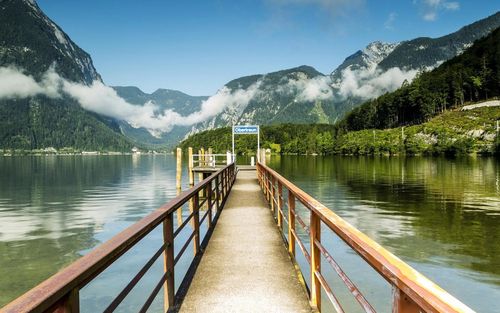Discovering Asia’s Tangible Cultural Heritage: 5 Examples to Explore
Asia is a continent steeped in history and culture. From ancient civilizations to modern metropolises, Asia offers endless opportunities for exploration and discovery. One of the most unique aspects of Asia is its tangible cultural heritage. These are physical structures and artifacts that serve as a window into the past, providing a glimpse into the world of our ancestors. Here are five examples of tangible cultural heritage in Asia that are worth exploring:
1. The Great Wall of China
No list of tangible cultural heritage in Asia would be complete without the Great Wall of China. This architectural masterpiece is a series of fortifications that traverses the northern borders of China. The Great Wall was built over centuries, beginning in the 7th century BC and stretching over 13,000 miles. Today, it is one of the most popular tourist attractions in China and a UNESCO World Heritage site. Visitors can hike or take a cable car to sections of the wall and marvel at the engineering feat that allowed the wall to be built.
2. Angkor Wat, Cambodia
Located in northwest Cambodia, Angkor Wat is a temple complex and the largest religious monument in the world. Built in the 12th century by the Khmer Empire, the temple complex features intricate carvings, stunning architecture and reflects Hindu and Buddhist influences. The site was lost to the jungle for centuries and only rediscovered in the 19th century. Today, it is a UNESCO World Heritage site and one of the most visited tourist destinations in Cambodia.
3. Borobudur Temple, Indonesia
Borobudur Temple is a Mahayana Buddhist temple located in central Java, Indonesia. Built in the 9th century, it is also the largest Buddhist temple in the world. The temple complex consists of six square platforms topped by three circular platforms. Visitors can explore the intricate carvings on the walls of the temple and take in the stunning views of the surrounding mountains. Borobudur Temple is a UNESCO World Heritage site and a must-visit destination for anyone interested in Buddhist history and culture.
4. Taj Mahal, India
The Taj Mahal is one of the most famous structures in Asia. Located in Agra, India, the Taj Mahal is a mausoleum built by the Mughal emperor Shah Jahan in memory of his beloved wife Mumtaz Mahal. The structure is made entirely of white marble and features intricate carvings and designs. Visitors can explore the surrounding gardens and take in the stunning reflective pool. The Taj Mahal was designated a UNESCO World Heritage site in 1983.
5. Haeinsa Temple, South Korea
Haeinsa Temple is a Buddhist temple located in South Gyeongsang Province, South Korea. The temple was built in the 9th century and is home to the Tripitaka Koreana, a collection of Buddhist scriptures. The Tripitaka Koreana is the most complete collection of Buddhist texts in existence, and the printing blocks have been preserved since the 13th century. Visitors can explore the temple complex and marvel at the intricate carvings and stunning architecture. Haeinsa Temple is a UNESCO World Heritage site and a must-visit destination for anyone interested in Buddhist culture and history.
In conclusion, Asia’s tangible cultural heritage is a treasure trove of history and culture waiting to be explored. From the Great Wall of China to Haeinsa Temple in South Korea, there are endless opportunities for discovery and adventure. These five examples are just a taste of what Asia has to offer, and are must-visit destinations for anyone interested in history, culture, and architecture. So, pack your bags and start your journey of discovery today.
(Note: Do you have knowledge or insights to share? Unlock new opportunities and expand your reach by joining our authors team. Click Registration to join us and share your expertise with our readers.)
Speech tips:
Please note that any statements involving politics will not be approved.
